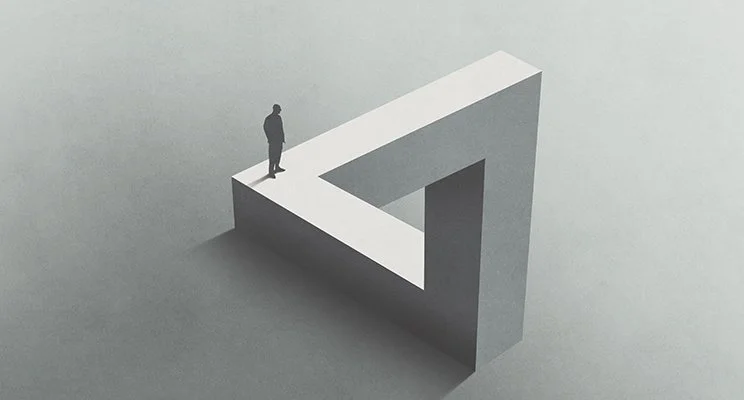8 Things You Should Expect From a Logo Design
When the time comes to create or refresh the logo for your business, the finished product includes far more than a graphic or visual.
Of course, that's the most tangible, recognizable result of the effort — the cutting-edge wordmark or design that perfectly captures the spirit of your company — but ideally, the logo itself is only one piece of a larger package that helps ensure your brand is reproduced at high quality for any type of material, by anyone on your team or when working with external printers and other partners.
If your logo needs to be scaled up for a large-format banner, or down to a small size that's still legible on the side of a pen, it will need to be formatted differently than for display on a website, for example. Likewise, if you only have the budget to print your logo in one color for a large order of t-shirts, then it will need to be delivered that way to the vendor.
A good designer will have navigated these hurdles in the past, and will deliver your awesome new logo with a comprehensive set of instructions, guidelines and files that are easy to reference and yours to keep.
Here's what should be included in the process:
1. Research and Benchmarking
Whether you already have a basic concept in mind for your logo or are relying on creative expertise for ideas, some amount of research and benchmarking should be done to help measure the competitive landscape. A core value of any good logo design is to help you stand out in an incredibly crowded marketplace — so you don't want to be the third carpenter in town with a hammer logo, right?
Even more importantly, before a single logo concept is created, you should share any available information about your business plan and its market position with your design partner: How is your company, organization or brand defined by consumers today? There are competitors that offer products and services similar to yours. What sets you apart? How do you differentiate yourself? Why do consumers choose you?
Believe it or not, the answers to these questions will translate into the lines, shapes, colors, typefaces and other elements that make up your finished logo.
2. Know Your Identity
With basic research and business planning as a foundation, your overall brand identity should begin to take shape. I know what you're thinking: I just need a logo. But an effective logo is a natural outgrowth of the people, products, services and qualities supporting it.
Think of the big red "S" on Superman's chest. By itself, that logo means nothing. Its power comes from the magic, flying, do-gooding alien that happens to wear it. And we know that logo not only from Superman's appearance, but from words: Faster than a speeding bullet! More powerful than a locomotive!
What are the "Superman" qualities of your business? What words do you use to describe its value? Empower your own creativity, or your designer, with the research-tested basics of your brand identity to provide a strong backbone for your eventual logo design.
3. Choices, Concepts and Options
Your logo should be built to last several years — maybe decades! The finished result should be the one that survives multiple rounds of rigorous testing, tough questions and decisions, doubts and affirmations.
Image credit: Tubik Blog
It's always worthwhile to invest the time and patience to come up with the best logo possible. The process should always include multiple concepts, options and refinements for you as the decision-maker: in other words, basic sketches that are relatively easy to change.
Only after you approve your favorite concept should more formal, time-consuming designs be created that include color and other elements.
4. Supporting Visual Elements
The logo in its natural habitat is pretty straightforward: Think about the Nike swoosh in white on a black background.
Simple, right? While that's a nice, clean idea to imagine on a business card or at the end of a video ad, most of the time your logo will appear with an entire system of visuals supporting it: Photography that matches your style. Primary and secondary colors. Typography, patterns, textures, backgrounds and other elements to provide your marketing with compelling layers and depth.
The Broadview logo in this brochure coexists with a family of supporting visual cues. By Trabon Group.
When the time comes to produce your next billboard, email campaign or direct mailer, your creative team will need a family of logo-friendly assets to create a high-quality, attention-grabbing piece. Among the deliverables for your logo design should be a set of mix-and-match background tools to make production as smooth and versatile as possible in the future.
5. Editorial Style
Let's go back to the brand identity we talked about earlier.
Just as brand identity tells us what your business is, editorial style defines how you'll talk about it. This is all about tone, mood, attitude, writing and messaging — so while a designer wouldn't create this as part of your logo package, it's an important companion exercise to complete in parallel with the visuals you develop.
If you own a small bakery, three key elements of your brand might be freshness, quality and selection. How, specifically, will you connect with customers about those aspects of your business? Do you plan to serve upscale clientele, and charge premium prices for premium goods? Then the tone and attitude of your marketing would be much different than a bakery that caters to young families with small children, using playful content to talk about affordable quality.
The critical thing to realize is that the messaging, or verbal identity, of your brand is just as important as its visual identity and logo. They should work together to deliver on the promises you make to consumers via marketing and advertising.
6. Usage Guidelines
Have you ever seen a sign or billboard and noticed that the company's logo just looks…off? Maybe it's too big for the space, the colors seem wrong or the logo gets crowded by other words and visuals? (This happens to me all the time. Pet peeve.)
The last thing you want is for the time and effort put into your logo to be squandered when it gets published at poor quality to a website, social media, video, in print or on merchandise. To avoid this, request that your design partner include a comprehensive set of usage guidelines for various formats along with your finished logo.
These guidelines should definitely include basics like required clear space, size and proportion recommendations, and acceptable color combinations — but visual mockups of "dos and don'ts" are helpful as well, especially for teams and organizations with large communications systems.
7. A Complete Package for Your Needs
Hopefully this checklist is helpful as you create or redesign your company's logo. It may be that you don't need everything listed here — or your team needs some variation of it, including workable templates in certain apps or programs.
The key is to be thorough, and to work backward from delivery of the end result when building the project estimate with your designer.
8. Files You Own
Finally: Remember that you own the artwork, files and assets created by the designer! As a paying client, you should receive all native logo files in their various original formats, even if you personally don't have the software to open them. Keep track of these files — you may need to work with another designer in the future, or a vendor may request them.
Your design partner may want to publish and promote your logo project as part of their portfolio, so it always helps to discuss this during the project as well. But you paid for a logo, and it's now your company's intellectual property.
Congratulations and enjoy!
About Me
I’m a freelance partner for small business, higher education and nonprofits with more than 20 years of award-winning experience in marketing, writing, design and strategy. Proud graduate of The University of Toledo and Michigan State University.




